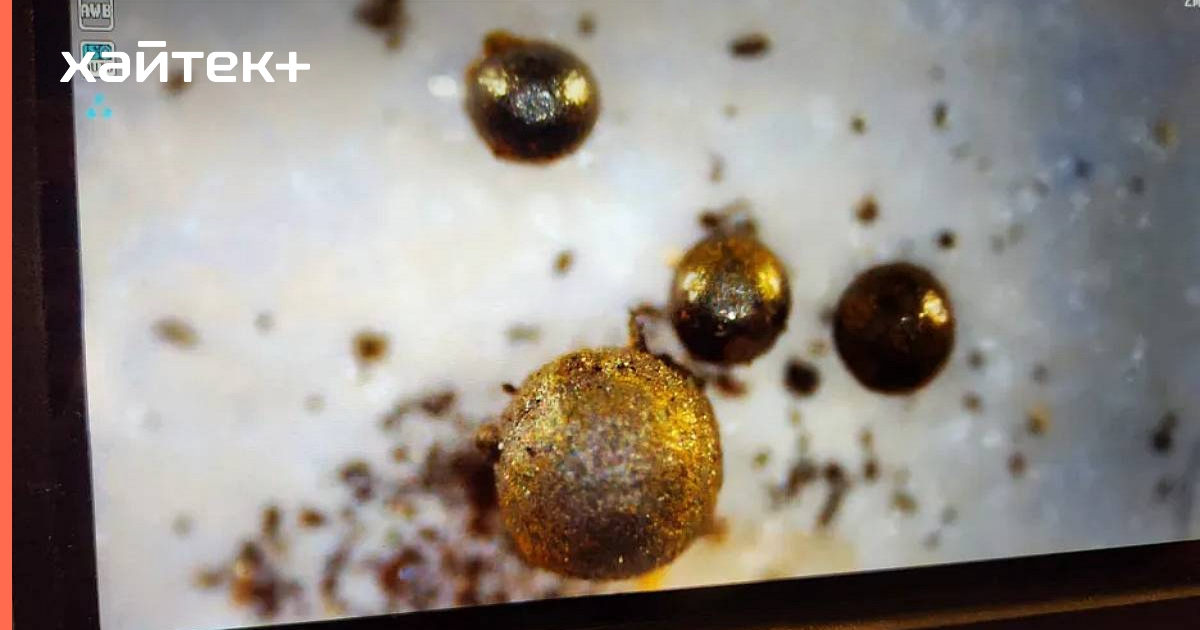Scientists Discover Anomalous Objects in Search for Extraterrestrial Material in Pacific Ocean
A scientific expedition led by Avi Loeb, an astrophysicist from Harvard, is currently underway in the Pacific Ocean near Papua New Guinea. The team is on a mission to collect remnants of an interstellar object that fell into the waters in January 2014. Using a deep-sea magnetic sled, the researchers hope to find material from another star system.
Although the team has already found some “anomalous” objects, they have yet to come across anything definitively extraterrestrial. However, Loeb remains optimistic about the expedition, calling it the most outstanding in his scientific career. He believes that exploring the Pacific Ocean provides a unique opportunity to learn about other technological civilizations in space.
One of the main objectives of the expedition is to locate the IM1 interstellar meteorite, a mysterious 500 kg object that fell to Earth a decade ago. Loeb speculates that this meteorite could potentially be man-made. Despite the lack of results so far, Loeb, a specialist in cosmology and astrophysics, is confident in his team’s ability to make significant discoveries.
Recently, the expedition made an intriguing discovery. They found microscopic magnetic balls buried in volcanic ash at the ocean floor. Analysis of the composition revealed that these balls are primarily composed of iron with traces of magnesium and titanium, and notably, they do not contain nickel. Loeb described this combination as “anomalous” compared to terrestrial alloys and known meteorites.
The team plans to continue magnetizing the ocean floor until June 29, with the intention of sending the entire catch to the laboratory for more thorough analysis. The IM1 meteorite entered Earth’s atmosphere on January 8, 2014, and was recorded by NASA’s Near Earth Object Research Center. Loeb and his student, Amir Siraj, later concluded that the high speed of the impact suggests the object originated from another star system. This hypothesis was later confirmed by the US Space Command after studying classified data. The same method was used to identify another interstellar object, IM2, which crashed off the coast of Portugal in March 2017.
Both meteorites were moving at speeds exceeding 177,000 km/h upon entering the atmosphere, which is atypical for objects within our solar system. Additionally, they appear to be stronger than regular space rocks. Loeb believes that the interstellar origin of IM1 and IM2 is intriguing enough, but he goes further to suggest that traces of technosignatures, signs of highly developed extraterrestrial civilizations, may be found on these objects. The strength of the material from which they are made leads him to believe that they could be fragments of man-made objects from distant stars. Loeb hopes that careful study of the samples will provide a definitive answer to this question.
In recent years, astronomers have observed two other objects from interstellar space, namely the never-identified ‘Oumuamua and comet 2I/Borisov. This suggests that there will likely be more such objects in the future. To study them more thoroughly, scientists propose sending a research probe to intercept them in time. An international team of scientists has already outlined what such a mission might entail.
The ongoing expedition in the Pacific Ocean holds great promise for unraveling the mysteries of interstellar objects and potentially discovering evidence of advanced extraterrestrial civilizations. As the team continues their search, the scientific community eagerly awaits the results of their thorough analysis.
What significance does the IM1 interstellar meteorite hold, and how could its discovery impact our understanding of the existence of extraterrestrial life
D the atmosphere at a high speed, causing it to break apart and scatter debris across the Pacific Ocean. The researchers believe that through their efforts, they can potentially uncover materials from other star systems, shedding light on the existence of extraterrestrial life.
Loeb and his team are utilizing a deep-sea magnetic sled to scour the ocean floor in search of these extraterrestrial remnants. While they have come across “anomalous” objects, they have yet to find conclusive evidence of extraterrestrial origin. Despite this, Loeb remains optimistic and considers this expedition to be the pinnacle of his scientific career.
The primary goal of the expedition is to locate the IM1 interstellar meteorite, a massive object that fell to Earth ten years ago. Loeb postulates that this meteorite could have been artificially created, adding to its significance. Despite the lack of definitive findings thus far, Loeb, an expert in cosmology and astrophysics, has confidence in his team’s abilities to make groundbreaking discoveries.
Recently, the team made a fascinating discovery. They unearthed microscopic magnetic balls buried in volcanic ash on the ocean floor. Analysis of these balls revealed that they are primarily composed of iron with traces of magnesium and titanium, and surprisingly, they lack nickel. Loeb describes this composition as “anomalous” when compared to known terrestrial alloys and meteorites.
The research will continue until June 29, with the team planning to magnetize the ocean floor further. They aim to send their entire catch to the laboratory for in-depth analysis. The findings from this expedition have the potential to revolutionize our understanding of the universe and the existence of other technologically advanced civilizations.


This groundbreaking expedition marks an exciting step towards uncovering clues about extraterrestrial objects in our own backyard. The Pacific Ocean’s depths hold endless mysteries, and these scientists are pushing boundaries to find answers. Exciting times ahead for space exploration!